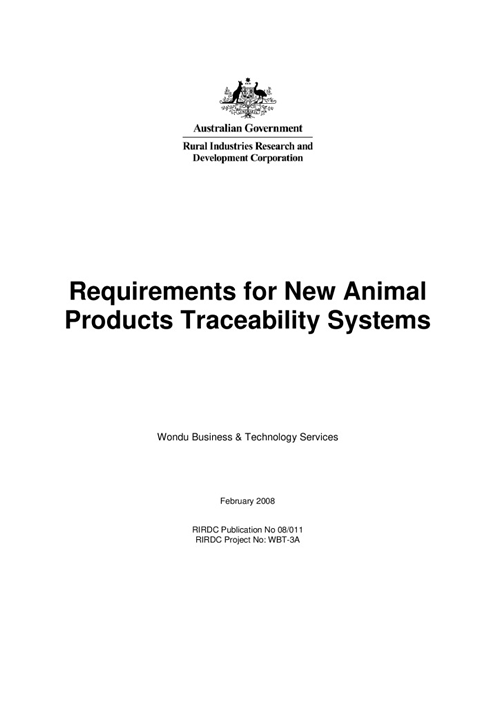This report describes the results of a research project into the requirements for establishing improved traceability systems for the industries covered by the New Animal Products (NAP) sub-program of RIRDC. These industries include farmed rabbit, ostrich, emus, dairy sheep, crocodile, water buffalo, camel, yabby, ducks, turkey, squabs, kangaroo and several others. They feature vastly different industry structures, ranging from highly concentrated ownerships and tightly integrated firms with strong brand development and which dominate poultry production through to fragmented supply chains with minimal brand development. These underlying structural features affect significantly the level of private investment in traceability systems. The more fragmented the supply chain the less likely there is to be private investment in a traceability system, unless accompanied by regulations that compel wide participation or taxes and subsidies that create incentives.





